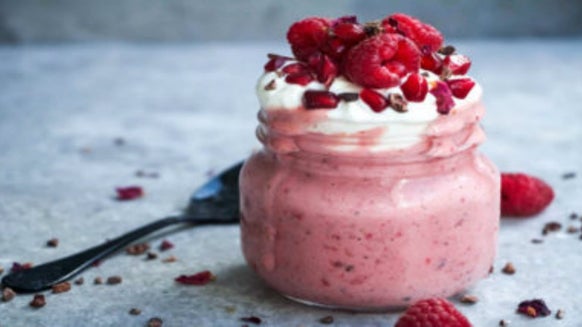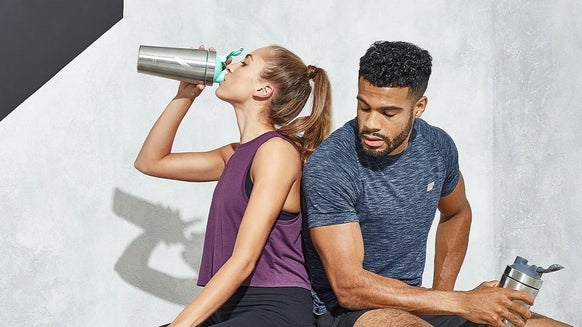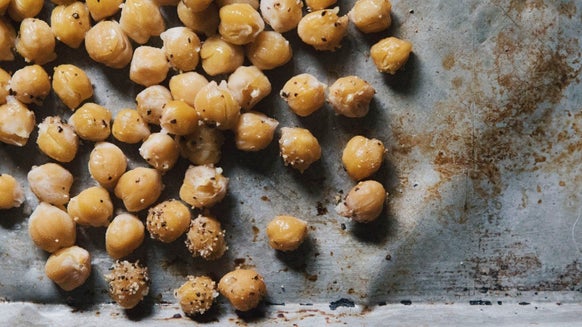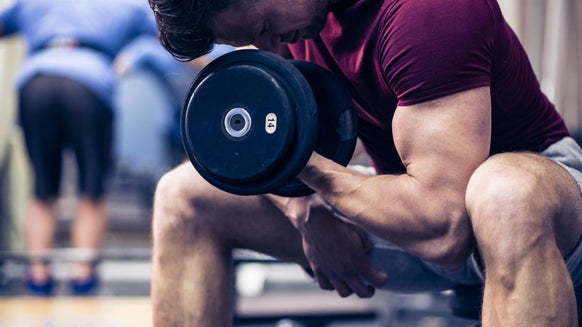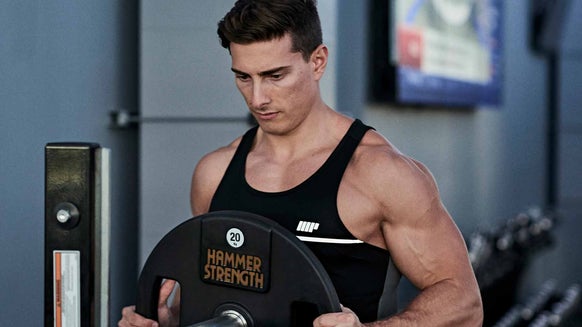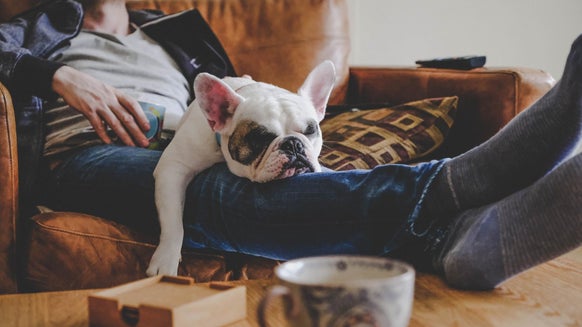10 Basic Yoga Exercises For Beginners | Yoga Made Easy
So, it’s time to roll out that yoga mat and discover the physical and mental benefits yoga has to offer. Whether you're young or old, male or female, yoga has the potential to help calm your mind and strengthen the body.
Yoga at Home
Here are our top tips for getting started at home:
1. Create a comfortable spot: Remember there's no perfect spot, but's important you create a space that's as free from clutter and distraction as possible.
2.
3.
10 Basic Yoga Poses
1. Mountain Pose (Tadasana)
This pose just looks like you’re just standing there, right? Well, looks can be deceiving. The mountain pose is known as an “active pose” which has many benefits including improving posture and reducing back pain. It'll help strengthen your thighs, knees, ankles, abdomen and glutes.

You should start by standing with your feet together and spreading the weight of your body evenly across the balls and arches of your feet. Ensure your big toes are pressed together. Now, lift your toes and spread them apart, then place them back down on the mat individually. If you have trouble balancing, start with your feet slightly apart. Straighten your legs, but ensure all your weight is evenly distributed across your feet. You should pull your thighs up and back, whilst rotating them inwards slightly. This will engage your quads. Now, tuck in your tailbone, and keep your hips in line with the centre of your body. Draw your belly in slightly, keeping your pelvis in its natural position. Elongate your torso and push your shoulder blades back whilst broadening your collarbones. Keep your arms straight, fingers extended and allow your inner arms to rotate slightly outward. You now want to create a line with your ears, shoulders, hips and ankles by extending the neck. Keep doing your breathing exercises and feel the benefits of the mountain pose with each breath. If you can, hold this pose for one minute.
2. Raised arms pose (urdhva hastasana)
The raised arms pose is done by adding to the mountain pose. Practising this pose regularly helps to improve respiratory and lung function, increased energy and well‐being, improve the cardiovascular systems and can help calm you down. This pose is beneficial for helping reduce symptoms of fatigue, asthma and indigestion.

To start this pose you want to turn your arms outwards so they face away from your torso. Make sure your thumbs point backwards. Now, move your arms out to the side and towards the ceiling. If you're less flexible in your shoulders, don’t worry about putting both hands together. Stop when it gets uncomfortable. You now want to fully extend your elbows and reach up through your fingers. Your thumbs should naturally turn down slightly towards your head. Tip your head back slightly, but do not compress the back of your neck. Ideally, you should be able to see your thumbs. If you do not have this level of flexibility, don’t force it – with practise it will come. Lengthen your tailbone towards the floor and lift your rib cage evenly away from the pelvis. If possible, hold this pose for one minute.
3. Standing Forward Bend (Uttanasana)
The standing forward bend has many benefits including reducing stress and mild depression and relieving symptoms of fatigue and anxiety.

It can also help stimulate the liver and kidneys, stretches the hamstrings, calves and hips, strengthens the thighs and knees and improves indigestion. If you have asthma, high blood pressure, infertility, osteoporosis or sinusitis, performing the standing forward bend can be therapeutic. To start, stand up straight with your hands on your hips. When exhaling, bend forwards from the hip joints. When bending forwards, pull your torso out from the groin. It is crucial to emphasize lengthening the front of your torso in this move. With your knees straight, place your palms and fingers on the ground slightly in front of your feet or the back of your ankles. This may not be possible if you are stiffer in your hip joints. In this case, just place your hands as far down the back of your legs as possible. - With each breath, try to lift the front torso slightly more.
Aim to hold this pose for one minute.
4. Garland Pose (Malasana)
The garland pose is a great basic yoga exercise to help recover from lower back or knee injuries. The garland pose also has the benefits of toning the belly and building strength in the core, as well as stretching out the ankles, groins and back torso.

To begin, squat with your feet as close together as possible. Ensure you keep both heels on the floor. Now separate your thighs slightly wider than your torso. Whilst exhaling, lean your torso forward so it is positioned between your thighs. Push your elbows against the inside of your knees, whilst moving your palms together. Make sure your knees do not move forward. Aim to hold this pose for one minute.
5. High Lunge Pose
The high lunge pose should not be done by anyone who has any serious knee injuries. On the other hand, this pose is highly therapeutic for indigestion, constipation and sciatica. The high lunge pose is beneficial as it stretches the groins, whilst strengthening the legs and arms.

To start, get into the standing forward bend position (as described above) and bend your knees. Now, step your left foot back and place the ball of your foot on the floor. You want to form a right angle with your right knee. Next, you want to place your torso on your front thigh and extend it forward and look forward. Push your left thigh towards the ceiling whilst keeping the left knee straight. Stretch your left heel towards the floor. Aim to hold this pose for one minute, and repeat with the opposite leg.
6. Plank
If you suffer from carpal tunnel syndrome, we'd advise against this pose. The plank is very well known for building core strength and toning your abs while strengthening the arms, wrists and spine.

To start you want to get on your hands and feet with your glutes facing upwards (downward‐facing dog pose). Now inhale and pull your torso forwards. Your arms should be perpendicular to the floor, with your shoulders directly over the wrists. Your torso should be parallel to the floor. Press your outer arms inwards and your shoulder blades towards your back. Now, pull your collarbones away from your chest. Push your thighs towards the ceiling, while pushing your tailbone towards your heels. - Keep your neck soft as you look towards the ground.
Aim to hold his pose for 45 seconds.
7. Staff Pose
If you suffer from any wrist injuries, it is advised to be gentle when practising this pose. The staff the pose is excellent for strengthening the muscles in your back, stretching out the shoulders and chest, as well as improving posture.

To start, sit with both legs extended out in front of you together. Make sure your back is completely upright, forming a 90-degree angle with your legs. Push your thighs against the floor, and allow them to turn slightly inwards. Push your heels away from your body and flex your ankles. Now lengthen your torso as much as you can. Aim to hold this pose for one minute.
8. Seated Forward Bend (Paschimottanasana)
The seated forward bend has many benefits including helping to relieve stress, anxiety and mild depression. Performing this pose regularly stretches the spine, shoulders and hamstring, as well as stimulating the kidneys, liver, ovaries and uterus.
As well as improving digestion, the seated forward bend helps relieve symptoms of menopause and discomfort experienced during menstruation. Doctors say the seated forward bend is therapeutic for high blood pressure, infertility, insomnia and sinusitis.

To start, sit on the floor with both legs extended in front of you and push your heels into the ground. Allow your thighs to turn inwards slightly. Place your hands next to your hips and push them into the ground. Lift your sternum to the ceiling. Ensure you keep your torso long, and extend forward from the hip joint. Stretch your tailbone away from your pelvis. If you can, try to keep your elbows fully extended and hold the sides of your feet with your hands. If you are not able to do this, loop a strap around your feet and firmly hold the strap. Ensure you keep your head raised. Aim to hold this pose for one minute.
9. Head To Knee Pose (Janu Sirsasana)
The head to knee pose is believed to be therapeutic for people suffering from high blood pressure, insomnia and sinusitis. Regularly performing this pose helps strengthen the back muscles during pregnancy (up to the second trimester).
It can help relieve anxiety, fatigue, menstrual discomfort, mild depression and headaches. This pose stretches out the spine, shoulders, hamstrings and groin. As well as improving digestion, the head to knee pose stimulates the liver and kidneys.

To start, sit with both legs out straight in front of your body. Bend your right knee and place against your inner left thigh. You want to form a right angle between your right shin and your left leg. Push your right hand against your inner right groin, and place your left hand by your hip on the ground. - Turn your torso slightly to the left. Aim to hold this pose for one minute.
Make sure to do this pose on both sides to get the full benefits.
10. Happy Baby Pose (Ananda Balasana)
This stretch doesn’t have as many medical benefits to the other poses, but it is great for bringing better awareness to your hips. It also stretches out the inner groins and the back of the spine. Similar to many other poses, the happy baby pose calms the brain and helps relieve stress and fatigue.

Start by lying on your back with your knees bent into your belly. Hold the outside of your feet with your hands. Now open your knees slightly wider than your torso and pull your knees towards your armpits. Ensure your ankles are directly over your knees and flex your heels. Push your feet into your hands, using your hands to create resistance. Aim to hold this pose for one minute.
Take-Home Message
Yoga doesn't have to be hard. Our beginner yoga poses will help you create a strong foundation for you to build on. These are the postures you'll need to learn, so you can feel comfortable in a class or practising on your own.
Don’t be intimidated by those fancy yoga terms, state of the art yoga studios and complicated poses. Yoga is for everyone and can be done from the comfort of your own home.


